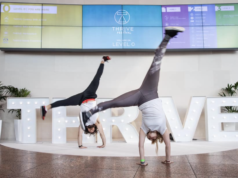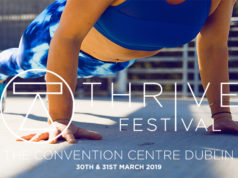from Eoin’s Journey I’ve been more and more interested in nutrition since I started running and racing and almost six weeks ago I changed to low carb/high fat. I’d been trying to find a way to explain my rationale here (apart from being yeast intolerant and just a bit gluten intolerant too). Then I saw Conor Murphy posting on Twitter and the conversation turned to a guest blog! So Conor, take it away….
This is a guest post by Conor Murphy of www.nurish.ie
Have you ever heard of Professor Tim Noakes? Noakes is a South African doctor and sports scientist. He has also run over 70 marathons and ultra marathons. His academic qualifications, and real world experience, put him in an excellent position to write a book about endurance exercise. In fact, he did just that. In 1985, he published a book entitled ‘Lore Of Running’. The most recent edition, the 4th edition, was published in 2004. In this book, Noakes devotes a chapter to nutrition, and he discusses the traditional concepts of nutrition for endurance exercise, such as carb loading pre exercise. It was fairly standard stuff. But then, in 2012, Noakes came out and told people that he had got it wrong. He advised people to tear out the chapter on nutrition from his book, and burn it. So, what changed?
Traditionally, distance runners, and other endurance athletes, have been taught to consume a large quantity of carbohydrates in the lead up to a big event. In fact, the nutritional advice to the general population has always been to eat lots of carbs. A healthy diet was always presumed to be low in fat, and high in “complex” carbs, like breads, pastas and cereals. Endurance athletes were taught to eat even more carbs. It was pretty simple really – carbs = energy, and a lot of energy is needed for an endurance event. But what if all of this is wrong?
Researchers in nutrition across the world are slowly coming to the conclusion that dietary fat is not the demon it was once thought to be. They have managed to separate dietary fat and bodily fat in their minds, realising that they are different things, and that healthyfats are actually an essential, beneficial nutrient.
Now, the finger of blame is being pointed at carbs. High carbohydrate consumption has been linked to obesity, diabetes and metabolic syndrome, and certain carbs, such as grains, have been linked to irritable bowel syndrome and leaky gut syndrome. Maybe the food pyramid was wrong all along?
Professor Noakes, like many leading sports scientists, now advocates a low carbohydrate, high fat diet. Eating in this way prevents the body from storing excess carbs as fat, and it also allows the body to use stored fat as an energy source more readily. This is achieved, in part, by improving how the body regulates the hormone insulin. A low carb diet improves the body’s insulin sensitivity (how well the body handles insulin), and generally keeps insulin levels low. High insulin levels can lead to excess carbs being stored as fat, and can indirectly prevent the body using stored body fat as an energy source.
Noakes decided to try this on himself, and went on a Paleo diet, consisting mainly of meats, fish and vegetables. After 5 months, he was 15kg lighter, and running faster than he had in 20 years (he was 61 at the time).
So, how does this all of this translate into nutrition advice for preparation for your next big race? The first thing is to be aware that each individual is different. You will have to experiment to see what works for you. Secondly, if you are eating a high-carb diet now, it might take your body time to adapt to using fat as an energy source.
My advice is to convert to a low carb, high fat diet for your day-to-day life first of all. The first question everyone asks is how low carb should you go? This again depends on you as an individual. Personally, I try to follow what is known as a targeted ketogenic diet (also called carb cycling or carb back loading). This means that at most meals I just eat meat and vegetables. After exercise, I eat carbs; gluten-free carbs such as potatoes or quinoa. This allows me to replenish my glycogen stores after exercise, without the carbs being converted to fat. Other people eat carbs every day, but only eat a small amount. For example, 20% of their calories might come from carbs, 30% from protein, and 50% from fat. This particular 20:30:50 ratio has been used in academic research to test the effectiveness of a low carb diet for fat loss, and the results showed that those on the low carb diet lost more fat than those on the low fat diet. Hydration is also very important. On non-exercise days, you should aim to drink at least 2-3 litres of water.
In the lead up to a race, you will want to make sure that your glycogen stores are full. On the night before the race (not the morning), have a good meal with carbs in it. How much carbs? This is an individual thing, and however much you feel is right for you. A standard or slightly larger serving of potatoes, quinoa or basmati rice should do the trick. It’s important to consume these carbs the night before the exercise, as the body takes time to digest the carbs. It will also prevent you from having blood sugar spikes and troughs on the day. On the morning of the race, don’t eat too much. Eating a lot of carbs before the race will cause your blood sugar to spike initially, and then, during the race, it will crash causing you to feel tired and hungry.
Drink plenty of water during the race to keep yourself hydrated, but not too much. Drink to your thirst as a good rule of thumb. If you can, weigh yourself before the race and again afterwards. For every kg of weight you lost in the race, drink 1.5 litres of water afterwards, to re-hydrate your body.
Try to have a good recovery meal immediately after the race. Many people have a post exercise shake, as it’s easier to consume. In this shake you will want protein and medium to high GI carbs. The carbs are used to replenish your glycogen stores, and also to cause an insulin spike that helps with the up take of protein. The protein is needed to repair the damage to the cells of your body during the exercise, especially the muscles. Try to get a solid meal in soon after the exercise as well. Good quality meat, potatoes, and leafy green vegetables would be a good meal to have after exercise.
If you have any further questions, I’d be delighted to answer them. You can contact me on Facebook (www.facebook.com/nurishfood) or on Twitter (@nurishfood).



This is a guest post by Conor Murphy. Conor is the author of Nutrition Simplified: The Intelligent GuideTo Losing Fat, Eating Healthily and Making Good Decisions. Conor also writes a blog about healthy eating and you can find it at www.nurish.ie.
This is a guest post by Conor Murphy of www.nurish.ie
Have you ever heard of Professor Tim Noakes? Noakes is a South African doctor and sports scientist. He has also run over 70 marathons and ultra marathons. His academic qualifications, and real world experience, put him in an excellent position to write a book about endurance exercise. In fact, he did just that. In 1985, he published a book entitled ‘Lore Of Running’. The most recent edition, the 4th edition, was published in 2004. In this book, Noakes devotes a chapter to nutrition, and he discusses the traditional concepts of nutrition for endurance exercise, such as carb loading pre exercise. It was fairly standard stuff. But then, in 2012, Noakes came out and told people that he had got it wrong. He advised people to tear out the chapter on nutrition from his book, and burn it. So, what changed?
Traditionally, distance runners, and other endurance athletes, have been taught to consume a large quantity of carbohydrates in the lead up to a big event. In fact, the nutritional advice to the general population has always been to eat lots of carbs. A healthy diet was always presumed to be low in fat, and high in “complex” carbs, like breads, pastas and cereals. Endurance athletes were taught to eat even more carbs. It was pretty simple really – carbs = energy, and a lot of energy is needed for an endurance event. But what if all of this is wrong?
Researchers in nutrition across the world are slowly coming to the conclusion that dietary fat is not the demon it was once thought to be. They have managed to separate dietary fat and bodily fat in their minds, realising that they are different things, and that healthyfats are actually an essential, beneficial nutrient.
Now, the finger of blame is being pointed at carbs. High carbohydrate consumption has been linked to obesity, diabetes and metabolic syndrome, and certain carbs, such as grains, have been linked to irritable bowel syndrome and leaky gut syndrome. Maybe the food pyramid was wrong all along?
Professor Noakes, like many leading sports scientists, now advocates a low carbohydrate, high fat diet. Eating in this way prevents the body from storing excess carbs as fat, and it also allows the body to use stored fat as an energy source more readily. This is achieved, in part, by improving how the body regulates the hormone insulin. A low carb diet improves the body’s insulin sensitivity (how well the body handles insulin), and generally keeps insulin levels low. High insulin levels can lead to excess carbs being stored as fat, and can indirectly prevent the body using stored body fat as an energy source.
Noakes decided to try this on himself, and went on a Paleo diet, consisting mainly of meats, fish and vegetables. After 5 months, he was 15kg lighter, and running faster than he had in 20 years (he was 61 at the time).
So, how does this all of this translate into nutrition advice for preparation for your next big race? The first thing is to be aware that each individual is different. You will have to experiment to see what works for you. Secondly, if you are eating a high-carb diet now, it might take your body time to adapt to using fat as an energy source.
My advice is to convert to a low carb, high fat diet for your day-to-day life first of all. The first question everyone asks is how low carb should you go? This again depends on you as an individual. Personally, I try to follow what is known as a targeted ketogenic diet (also called carb cycling or carb back loading). This means that at most meals I just eat meat and vegetables. After exercise, I eat carbs; gluten-free carbs such as potatoes or quinoa. This allows me to replenish my glycogen stores after exercise, without the carbs being converted to fat. Other people eat carbs every day, but only eat a small amount. For example, 20% of their calories might come from carbs, 30% from protein, and 50% from fat. This particular 20:30:50 ratio has been used in academic research to test the effectiveness of a low carb diet for fat loss, and the results showed that those on the low carb diet lost more fat than those on the low fat diet. Hydration is also very important. On non-exercise days, you should aim to drink at least 2-3 litres of water.
In the lead up to a race, you will want to make sure that your glycogen stores are full. On the night before the race (not the morning), have a good meal with carbs in it. How much carbs? This is an individual thing, and however much you feel is right for you. A standard or slightly larger serving of potatoes, quinoa or basmati rice should do the trick. It’s important to consume these carbs the night before the exercise, as the body takes time to digest the carbs. It will also prevent you from having blood sugar spikes and troughs on the day. On the morning of the race, don’t eat too much. Eating a lot of carbs before the race will cause your blood sugar to spike initially, and then, during the race, it will crash causing you to feel tired and hungry.
Drink plenty of water during the race to keep yourself hydrated, but not too much. Drink to your thirst as a good rule of thumb. If you can, weigh yourself before the race and again afterwards. For every kg of weight you lost in the race, drink 1.5 litres of water afterwards, to re-hydrate your body.
Try to have a good recovery meal immediately after the race. Many people have a post exercise shake, as it’s easier to consume. In this shake you will want protein and medium to high GI carbs. The carbs are used to replenish your glycogen stores, and also to cause an insulin spike that helps with the up take of protein. The protein is needed to repair the damage to the cells of your body during the exercise, especially the muscles. Try to get a solid meal in soon after the exercise as well. Good quality meat, potatoes, and leafy green vegetables would be a good meal to have after exercise.
If you have any further questions, I’d be delighted to answer them. You can contact me on Facebook (www.facebook.com/nurishfood) or on Twitter (@nurishfood).



This is a guest post by Conor Murphy. Conor is the author of Nutrition Simplified: The Intelligent GuideTo Losing Fat, Eating Healthily and Making Good Decisions. Conor also writes a blog about healthy eating and you can find it at www.nurish.ie.






